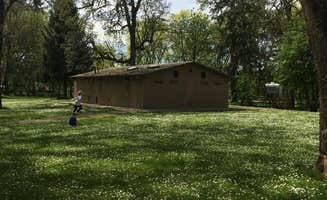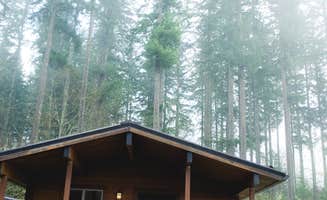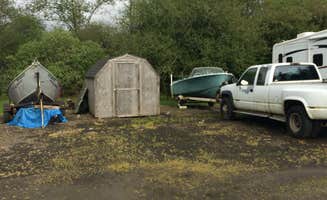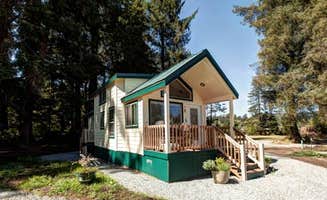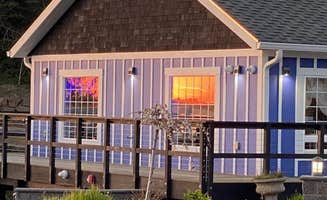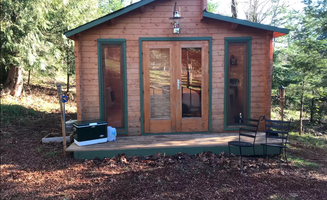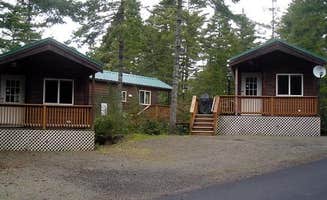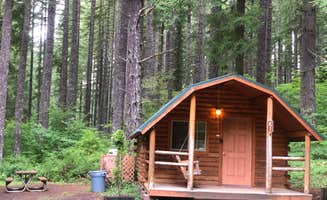Cabins near Yamhill, Oregon sit at elevations between 200-1,000 feet in the foothills of the Coast Range. Winter cabin stays typically experience temperatures ranging from 30-45°F with frequent rain, while summer months average 75-85°F. Rustic lodging options remain accessible year-round at most locations, though winter cabin availability may require planning around seasonal closures at certain parks.
What to do
Hiking on scenic trails: At Dairy Creek West — L.L. Stub Stewart Memorial State Park, cabins provide easy access to multiple trail systems. "There are lots of hiking, biking, and horse trails. They even have a disc golf course within the park. The CG is close to Portland, but you'd never know you were that close to a major city," notes one visitor. The park offers trails for all difficulty levels and connects to the paved Banks-Vernonia Trail.
Beach exploration: When staying at Cape Lookout State Park Campground, cabin guests have direct beach access just steps away. "Steps away from a beautiful, expansive beach. Do the Cape Lookout peninsula hike! Gorgeous views without great effort. Lots of tree roots that will tire your feet but not a strenuous hike overall: ~5 miles roundtrip," shares one camper. During low tide, explore tide pools containing small sea creatures.
Historical sites: Champoeg State Heritage Area Campground offers cabin guests access to Oregon pioneer history. "Champoeg has a little everything. GREAT biking trails that are kid friendly. There lots of historical sites around the campground to enjoy as well," reports one visitor. Self-guided historical tours explain the site's significance as Oregon's first provisional government location.
What campers like
Year-round accessibility: Oxbow Regional Park cabins maintain availability during quieter seasons. "Given it's late October and a bit chilly out, the campground was pretty quiet with only a few other campers around. We were able to hike the area and enjoy a serene weekend in nature," explains a visitor. Winter cabin availability often increases, though reservations remain recommended.
Private bathroom options: While many rustic lodging facilities have communal bathrooms, some locations offer more privacy. "The bathrooms are well maintained and have excellent showers. No coins needed," reports one visitor about Oxbow Regional Park. Cabin options at several parks now feature attached bathrooms rather than only shared facilities.
Expanded sleeping capacity: Most cabin facilities accommodate more than standard tent sites. "The cabin was very clean and well kept," writes a visitor to Dundee Hills Resort, where cabins feature multiple sleeping areas. Standard configurations include futon or sofa options in addition to beds for additional guests.
What you should know
Seasonal closures affect services: Some park facilities reduce operations during winter. "Since we were here last time, they now have an off-leash fenced dog area," notes a return visitor to L.L. Stub Stewart, highlighting that amenities change seasonally and annually. Always check official park websites for current status before booking.
Noise levels vary by location: Park sounds differ substantially between facilities. At some locations, natural sounds dominate: "Nehalem Bay is beautiful, and it's just down the road from two jetties. My family and I went crabbing just a ways away from the state park, and it was a beautiful day and a lot of fun," writes a visitor to Nehalem Bay State Park Campground.
Linens policy is consistent: Across nearly all cabins near Yamhill, guests must bring their own bedding. "The cabin was very clean and well kept," notes a visitor, but doesn't mention provided linens because facilities typically require guests to bring their own sheets, pillows and towels. This remains standard practice regardless of cabin classification.
Tips for camping with families
Playground proximity matters: When booking cabin accommodations with children, check for playground access. "Very nice campground. Large, clean sites. Lots of hiking and mountain biking trails within the park and a regional rail to trail runs through it," notes a visitor about L.L. Stub Stewart, which features playground facilities near certain cabin areas.
Water activities engage children: Barview Jetty County Campground cabins sit near water features children enjoy. "Cool location near the ocean. Walking or biking to the jetty was fun. The jetty offers a unique landscape," says one visitor. Another adds, "I spent many a year at this campground, letting the kids (who am I kidding, me) run up and down the big sand dune and play on the tree at the top!"
Consider booking cabins midweek: For families seeking quieter experiences, midweek reservations offer advantages. "We stayed here 2 nights to allow us time to check out a couple of wineries and work. The site was clean, as were the bathroom/showers," explains a Dundee Hills Resort visitor. Weekday stays typically mean fewer neighbors and more availability.
Tips from RVers
Hookup variations: For those transitioning between RV and cabin camping, understanding hookup differences helps. "Perfect home base for wine country and only 30 minutes from Portland. Super friendly and helpful staff," notes a Dundee Hills visitor. Cabin electric systems typically have lower amperage than RV sites.
Access limitations: Some rustic lodging facilities have restrictions RVers should know before booking. "On April 18 our first time out in 2022 we camped in spot 76. It rained the whole 5 days we stayed here. Never the less the campground was very clean," explains an L.L. Stub Stewart visitor about transitioning from RV to cabin camping. Some cabins lack the turnaround space RVers may expect.
Shared outdoor cooking areas: Unlike RVs with built-in kitchens, cabin cooking often happens outside. "There are communal fire rings in the back section (which is great for groups!). There are no trash cans: pack it in, pack it out," explains a Stub Stewart visitor, highlighting differences between RV and cabin camping approaches to meal preparation.


